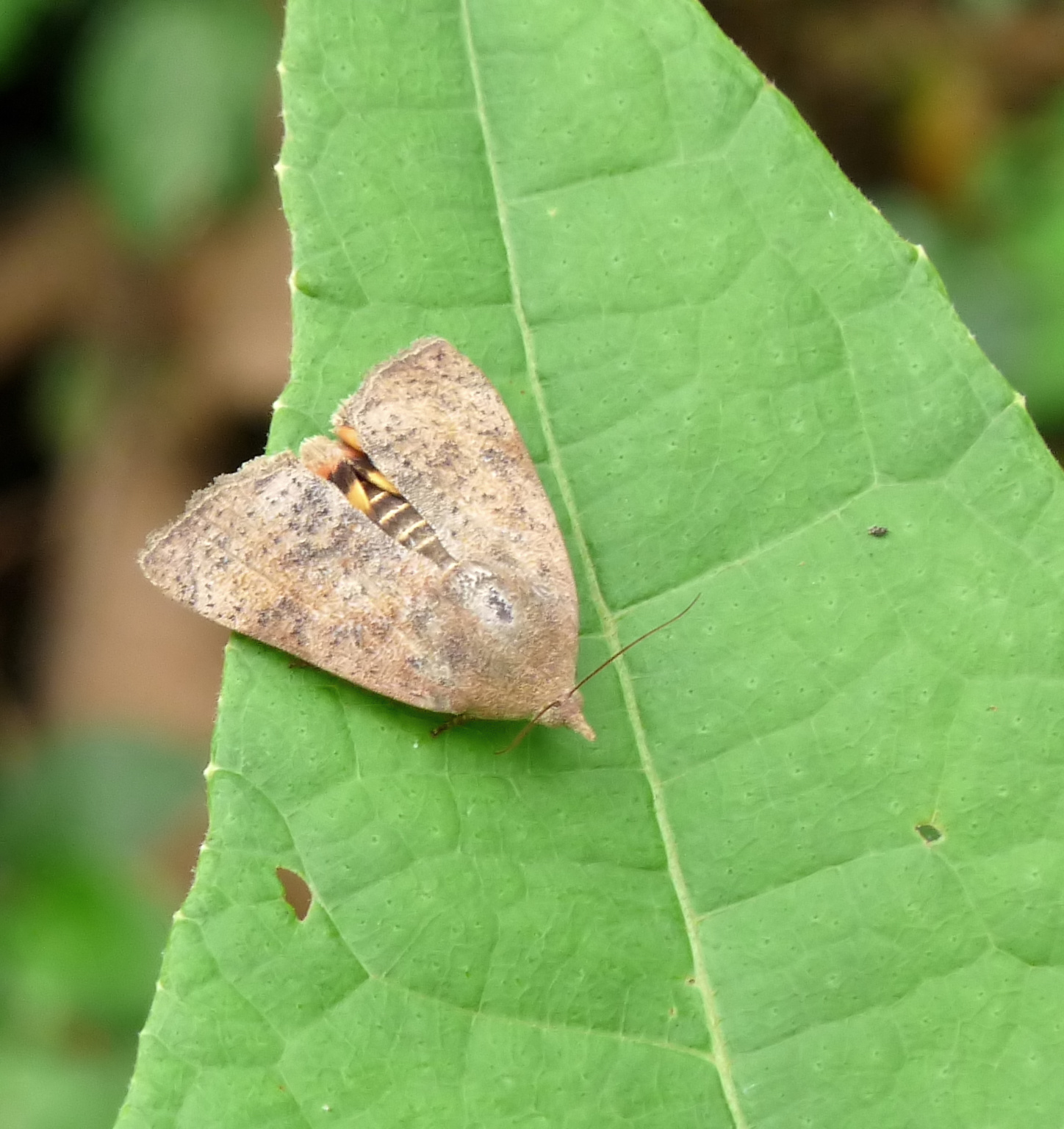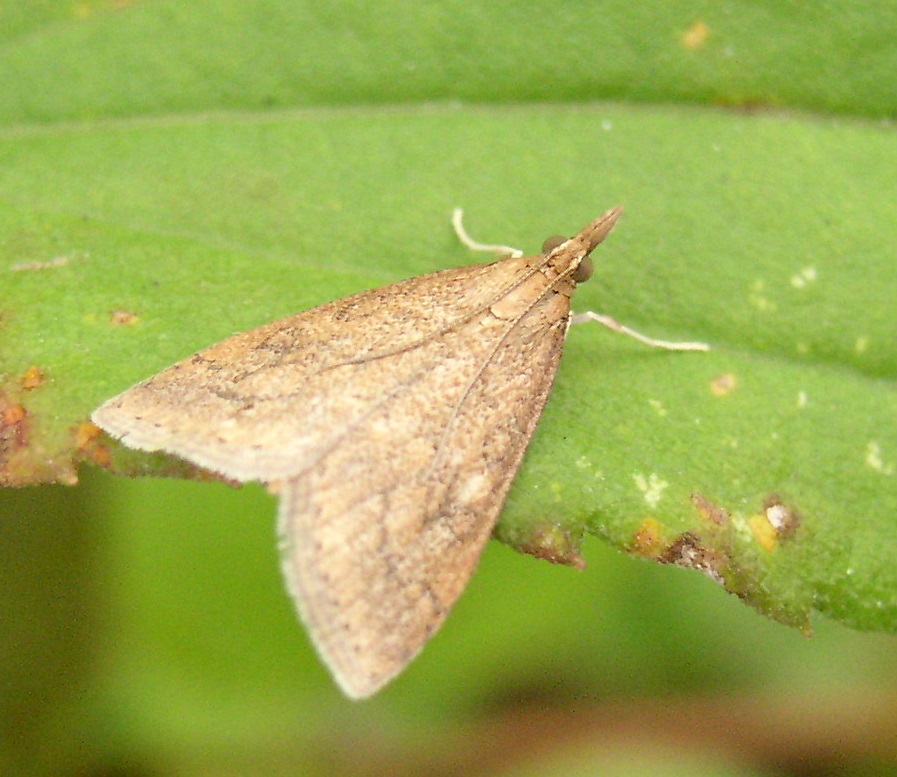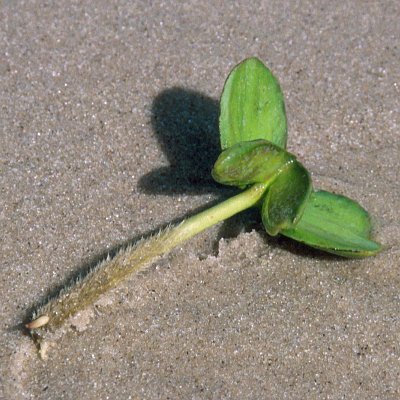|
Hyblaeidae
Hyblaeidae are the "teak moths", a family of insects in the Lepidopteran order. The two genera with about 18 species make up one of the two families of the Hyblaeoidea superfamily (the other family being the monotypic Prodidactidae), which in the past has been included in the Pyraloidea. Recent phylogenetic studies find varying relationships of Hyblaeoidea among Ditrysian Lepidoptera: Mutanen et al. (2010) find the superfamily to group either with Pyraloidea, or – more often – with Thyridoidea or butterflies. The results of Wahlberg et al. (2013) and Heikilä et al. (2015) indicate a sister-group relationship with Pyraloidea. Males have a specialised " hair-pencil" on the hindleg. The genus '' Hyblaea'' is distributed throughout the Old World tropics, and '' Torone'' in the Neotropics. Caterpillar host plants are well known and comprise almost exclusively species of the families Bignoniaceae, Verbenaceae, the mangrove A mangrove is a shrub or tree that grows in coastal ... [...More Info...] [...Related Items...] OR: [Wikipedia] [Google] [Baidu] |
Hyblaeidae
Hyblaeidae are the "teak moths", a family of insects in the Lepidopteran order. The two genera with about 18 species make up one of the two families of the Hyblaeoidea superfamily (the other family being the monotypic Prodidactidae), which in the past has been included in the Pyraloidea. Recent phylogenetic studies find varying relationships of Hyblaeoidea among Ditrysian Lepidoptera: Mutanen et al. (2010) find the superfamily to group either with Pyraloidea, or – more often – with Thyridoidea or butterflies. The results of Wahlberg et al. (2013) and Heikilä et al. (2015) indicate a sister-group relationship with Pyraloidea. Males have a specialised " hair-pencil" on the hindleg. The genus '' Hyblaea'' is distributed throughout the Old World tropics, and '' Torone'' in the Neotropics. Caterpillar host plants are well known and comprise almost exclusively species of the families Bignoniaceae, Verbenaceae, the mangrove A mangrove is a shrub or tree that grows in coastal ... [...More Info...] [...Related Items...] OR: [Wikipedia] [Google] [Baidu] |
Hyblaea Puera
''Hyblaea puera'', the teak defoliator, is a moth and cryptic species complex native to South Asia and South-east Asia. It was first described by Pieter Cramer in 1777. The species has also been recently reported to be present in Central America and Africa. The caterpillar feeds on teak and other trees. It is considered to be one of the major teak pests around the world. Distribution and habitat ''Hyblaea puera'' occurs in forests across southern Asia from India, Sri Lanka and Bangladesh, through Thailand and the rest of south-east Asia to New Guinea, and north Queensland in Australia. Recent reports place it in Guadeloupe, and Suriname. Life cycle The adult moths are comparatively small, with a wingspan of 3–4 cm, and have a characteristic resting posture that conceals the black and orange-yellow hindwings under the greyish-brown forewings. Males and females emerge more or less simultaneously and mating takes place within a couple of days. Eggs are laid on tender ... [...More Info...] [...Related Items...] OR: [Wikipedia] [Google] [Baidu] |
Erythrochrus
''Erythrochrus'' is a genus of moths in the family Hyblaeidae described by Gottlieb August Wilhelm Herrich-Schäffer Gottlieb August Wilhelm Herrich-Schäffer (17 December 1799 – 14 April 1874) was a German entomologist and physician. He was born, and died, in Regensburg. Herrich-Schäffer studied and collected particularly butterflies and moths (Lepidoptera). ... in 1855. Species * '' Erythrochrus bicolor'' * '' Erythrochrus hyblaeiodes'' * '' Erythrochrus notabilis'' References Hyblaeidae Moth genera {{moth-stub ... [...More Info...] [...Related Items...] OR: [Wikipedia] [Google] [Baidu] |
Torone (moth)
''Erythrochrus'' is a genus of moths in the family Hyblaeidae described by Gottlieb August Wilhelm Herrich-Schäffer Gottlieb August Wilhelm Herrich-Schäffer (17 December 1799 – 14 April 1874) was a German entomologist and physician. He was born, and died, in Regensburg. Herrich-Schäffer studied and collected particularly butterflies and moths (Lepidoptera). ... in 1855. Species * '' Erythrochrus bicolor'' * '' Erythrochrus hyblaeiodes'' * '' Erythrochrus notabilis'' References Hyblaeidae Moth genera {{moth-stub ... [...More Info...] [...Related Items...] OR: [Wikipedia] [Google] [Baidu] |
Hyblaea
''Hyblaea'' is a genus of moths of the family Hyblaeidae first described by Johan Christian Fabricius in 1793. Description Head very small. Palpi porrect (extending forward) and rostriform (beak The beak, bill, or rostrum is an external anatomical structure found mostly in birds, but also in turtles, non-avian dinosaurs and a few mammals. A beak is used for eating, preening, manipulating objects, killing prey, fighting, probing for foo ... shaped). Antennae minutely ciliated in male. Thorax and abdomen smoothly scaled. Tibia clothed with long hairs and spineless. Forewings with costa arched near base, with lobed inner margin. The cell open. Veins 6 to 9 arise from close to angle of cell. Hindwings with open cell. Vein 8 anastomosing with vein 7 to near middle of cell. Taxonomy The genus consists of the following species: References Hyblaeidae Moth genera {{moth-stub ... [...More Info...] [...Related Items...] OR: [Wikipedia] [Google] [Baidu] |
Pyraloidea
The Pyraloidea (pyraloid moths or snout moths) are a moth superfamily containing about 16,000 described species worldwide, and probably at least as many more remain to be described. They are generally fairly small moths, and as such, they have been traditionally associated with the paraphyletic Microlepidoptera. This superfamily used to contain the Hyblaeidae, Thyrididae, Alucitidae (plus Tineodidae), Pterophoridae, and Pyralidae. The first four families are now each split off as a distinct superfamily. Nowadays, Pyralidae are usually split into the Pyralidae sensu stricto and the Crambidae, as both groups have been shown to be monophyletic and a sister group. Some genera (e.g. '' Micronix'' and '' Tanaobela'') still defy easy classification and have been variously assigned to the Crambidae or the Pyralidae. Among all Lepidoptera, pyraloids show the most diverse life history adaptations. The larvae of most species feed on living plants either internally or externally as ... [...More Info...] [...Related Items...] OR: [Wikipedia] [Google] [Baidu] |
Hair-pencil
Hair-pencils and coremata are pheromone signaling structures present in lepidopteran males. Males use hair-pencils in courtship behaviors with females. The pheromones they excrete serve as both aphrodisiacs and tranquilizers to females as well as repellents to conspecific males.Hillier, N., & Vickers, N. (2004). The Role of Heliothine Hair-pencil Compounds in Female Heliothis virescens (Lepidoptera: Noctuidae) Behavior and Mate Acceptance. ''Chemical Senses'', 6 (29), 499-511. Hair-pencil glands are stored inside the male until courtship begins, at which point they are forced out of the body by sclerotized levers present on the abdomen.Birch, M. C., & Poppy, G. M. (1990). Scents and Eversible Scent Structures of Male Moths. ''Annual review of Entomology'' (35), 25-58. Coremata (the singular form being corema) are very similar structures. Their exact definition is confused by early descriptions but they are more specifically defined as the internal, glandular, eversible structures t ... [...More Info...] [...Related Items...] OR: [Wikipedia] [Google] [Baidu] |
Rhizophoraceae
The Rhizophoraceae is a family of tropical or subtropical flowering plants. It includes around 147 species distributed in 15 genera.Setoguchi, H., Kosuge, K., & Tobe, H. (1999). Molecular Phylogeny of Rhizophoraceae Based on rbcL Gene Sequences. ''Journal of Plant Research'', ''112''(4), 443–455. https://doi.org/10.1007/PL00013899 Under the family, there are three tribes, Rhizophoreae, Gynotrocheae, and Macarisieae. Even though Rhizophoraceae is known for its mangrove members, only the genera under Rhizophoreae grow in the mangrove habitats and the remaining members live in inland forests. Taxonomy This family is now placed in the order Malpighiales, though under the Cronquist system, they formed an order in themselves (Rhizophorales).Juncosa, A. M., & Tomlinson, P. B. (1988). A Historical and Taxonomic Synopsis of Rhizophoraceae and Anisophylleaceae. ''Annals of the Missouri Botanical Garden'', ''75''(4), 1278. https://doi.org/10.2307/2399286 It is sister group to Erythroxyla ... [...More Info...] [...Related Items...] OR: [Wikipedia] [Google] [Baidu] |
Avicenniaceae
''Avicennia'' is a genus of flowering plants currently placed in the bear's breeches family, Acanthaceae. It contains mangrove trees, which occur in the intertidal zones of estuarine areas and are characterized by its "pencil roots", which are aerial roots. They are also commonly known as ''api api'', which in the Malay language means "fires", a reference to the fact that fireflies often congregate on these trees. Species of ''Avicennia'' occur worldwide south of the Tropic of Cancer. The taxonomic placement of ''Avicennia'' is contentious. In some classifications, it has been placed in the family Verbenaceae, but more recently has been placed by some botanists in the monogeneric family Avicenniaceae. Recent phylogenetic studies have suggested that ''Avicennia'' is derived from within Acanthaceae, and the genus is included in that family in the Angiosperm Phylogeny Group system. Designation of species is made difficult by the great variations in form of ''Avicennia marina''. ... [...More Info...] [...Related Items...] OR: [Wikipedia] [Google] [Baidu] |
Mangrove
A mangrove is a shrub or tree that grows in coastal saline or brackish water. The term is also used for tropical coastal vegetation consisting of such species. Mangroves are taxonomically diverse, as a result of convergent evolution in several plant families. They occur worldwide in the tropics and subtropics and even some temperate coastal areas, mainly between latitudes 30° N and 30° S, with the greatest mangrove area within 5° of the equator. Mangrove plant families first appeared during the Late Cretaceous to Paleocene epochs, and became widely distributed in part due to the movement of tectonic plates. The oldest known fossils of mangrove palm date to 75 million years ago. Mangroves are salt-tolerant trees, also called halophytes, and are adapted to live in harsh coastal conditions. They contain a complex salt filtration system and a complex root system to cope with saltwater immersion and wave action. They are adapted to the low-oxygen conditions of wate ... [...More Info...] [...Related Items...] OR: [Wikipedia] [Google] [Baidu] |
Verbenaceae
The Verbenaceae ( ), the verbena family or vervain family, is a family of mainly tropical flowering plants. It contains trees, shrubs, and herbs notable for heads, spikes, or clusters of small flowers, many of which have an aromatic smell. The family Verbenaceae includes 32 genera and 800 species. Phylogenetic studies have shown that numerous genera traditionally classified in Verbenaceae belong instead in Lamiaceae. The mangrove genus '' Avicennia'', sometimes placed in the Verbenaceae or in its own family, Avicenniaceae, has been placed in the Acanthaceae. Economically important Verbenaceae include: * Lemon verbena (''Aloysia triphylla''), grown for aroma or flavoring * Verbenas or vervains (''Verbena''), some used in herbalism, others grown in gardens Taxonomy Tribes and genera in the family and their estimated species numbers: Casselieae (Schauer) Tronc. * ''Casselia'' Nees & Mart. - 6 species * ''Parodianthus'' Tronc. - 2 species * ''Tamonea'' Aubl. - 6 species ... [...More Info...] [...Related Items...] OR: [Wikipedia] [Google] [Baidu] |
Bignoniaceae
Bignoniaceae is a family of flowering plants in the order Lamiales commonly known as the bignonias or trumpetvines.Vernon H. Heywood, Richard K. Brummitt, Ole Seberg, and Alastair Culham. ''Flowering Plant Families of the World''. Firefly Books: Ontario, Canada. (2007). . It is not known to which of the other families in the order it is most closely related.Peter F. Stevens (2001 onwards). "Bignoniaceae" At: Angiosperm Phylogeny Website. At: Botanical Databases At: Missouri Botanical Garden Website. (see ''External links'' below) Nearly all of the Bignoniaceae are woody plants, but a few are subwoody, either as vines or subshrubs. A few more are herbaceous plants of high- elevation montane habitats, in three exclusively herbaceous genera: ''Tourrettia'', ''Argylia'', and '' Incarvillea''. The family includes many lianas, climbing by tendrils, by twining, or rarely, by aerial roots. The largest tribe in the family, called Bignonieae, consists mostly of lianas and is note ... [...More Info...] [...Related Items...] OR: [Wikipedia] [Google] [Baidu] |




_W_IMG_9162.jpg)
